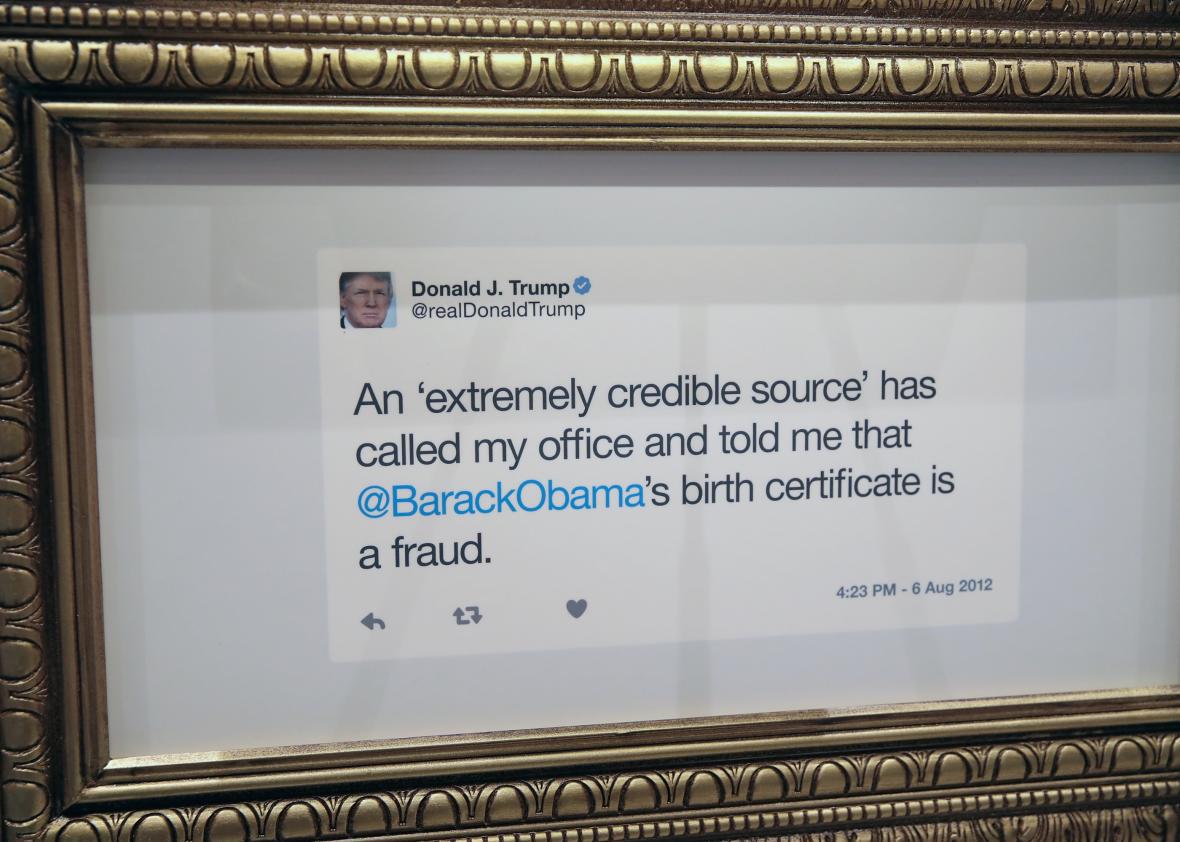When President Trump’s Twitter account disappeared for 11 minutes earlier this month, the internet went wild. Twitter first said it was human error that caused the brief deactivation. Then it added a compelling second detail: The employee responsible did it on his final day.
The mystery employee publically revealed himself in an interview with TechCrunch published Wednesday. Bahtiyar Duysak claims to have deactivated Trump’s account in the final hours of his position at Twitter as a customer support contractor in the company’s Trust and Safety division, which is responsible for handling reports of rule violations on the platform. Even though he’s been lauded as a folk hero who should be considered for a Nobel Peace Prize or Time’s Person of the Year, Duysak was quick to distance himself from any of the political symbolism that his fans have imbued with revoking what is arguably the president’s most powerful soapbox, instead referring to the act as a “mistake.” He has returned to his home in Germany and is now looking for a job in finance, claiming that he just wants an ordinary life.
Yet there are still a good number of questions left unanswered in this bizarre story. Here’s just a few:
What exactly was the “mistake”?
Reports on Duysak’s role in disabling Trump’s account have been vague in terms of his intentionality. According to the version he presented to TechCrunch, someone filed a complaint against the president’s account, which Duysak was charged with fielding on his last day. TechCrunch writes, “As a final, throwaway gesture, [Duysak] put the wheels in motion to deactivate it. Then he closed his computer and left the building. … he never thought the account would actually get deactivated.”
If he “put the wheels in motion to deactivate it,” but didn’t think the shutdown would actually happen, what was the goal?
Duysak’s interview with CNN makes the deactivation seem even more like a mistake; he claimed that he was “tired” and had a “headache.” “It’s not like I was looking for something or planning to do it. It was in front of me, and I didn’t do a good job, and I didn’t double-check things,” he told CNN, though he would not divulge the details of how he took down the account.
What is Twitter doing in response?
The answer to the previous question could shed some light on the unspecified “safeguards” that Twitter has promised to implement in light of the incident. The company said in a statement, “We won’t be able to share all details about our internal investigation or updates to our security measures, but we take this seriously and our teams are on it.”
It seems like measures designed to keep an eye on clumsy employees would be at least somewhat different from those aimed at “rogue” employees. It’s hard to speculate what Twitter’s response will be, though, when we don’t really know whether Duysak falls into one or both of these categories.
Meaghan O’Connell, who formerly worked in customer support at a tech company somewhat similar to Twitter, wrote in Slate that people in such a position are often granted access to “God Mode,” which is “the superpower to log in as anyone and do whatever the front-facing version of the app can do.” Some of these special privileges are necessary to fulfill the duties of the job, though they can also give potentially disgruntled employees the ability to essentially “do anything.” It’s unclear, however, if this was also the case at Twitter.
Is he in any trouble?
The TechCrunch piece implies that Duysak is likely safe for the moment from any legal sanctions. According to his lawyer, the FBI is not looking into the matter. Twitter has reached out to him for more details on the incident, but he is choosing not to cooperate with the investigation.
However, BuzzFeed suggests that he could have violated the Computer Fraud and Abuse Act, a federal statute prohibiting people from accessing computers without authorization. Twitter would not tell reporters, however, whether it plans on pursuing any legal action against him. The company also would not disclose how much access he was given.
For his part, Duysak has been adamant in his claim that he did not violate any laws. He told TechCrunch, “I didn’t hack anyone. I didn’t do anything that I was not authorized to do. I didn’t go to any site I was not supposed to go to. I didn’t break any rules.”
Who are the people who first tracked down Duysak?
Duysak says that he didn’t know about the firestorm he had initiated until a few hours after he left Twitter’s office for the last time.
In one of the strangest parts of his tale in TechCrunch, a woman, whom he said he didn’t know well, first alerted him of the worldwide attention his “mistake” had garnered. Someone investigating him in connection with the downed account had contacted the mystery woman, apparently after noticing she had “liked” a few of Duysak’s posts. Were these shadowy figures members of the press? Twitter representatives? Government investigators? And how had they found out so quickly that Duysak might be responsible?
Does he really expect us to believe his story about the cardigan?
Duysak wore a “black and gray cardigan with a pattern of the American flag across it” to his TechCrunch interview, which he claims was not planned. Really?
According to Buzzfeed, he changed his Facebook cover photo to an American flag with the caption “Love America!!” on the morning of Nov. 4, shortly after Trump’s account went down. The bio on what appears to be his Twitter account also reads, “Proud to feel American,” and the associated profile pic features him standing before flag-bearing troops.
The TechCrunch piece also ends with him saying, “But I love Twitter and I love America.”
Here’s a peek at the getup:
